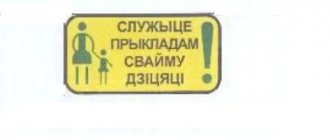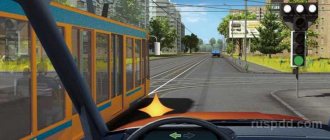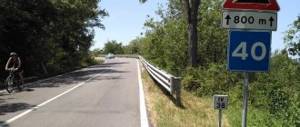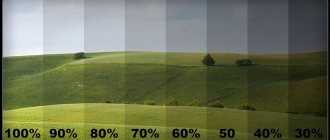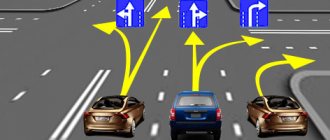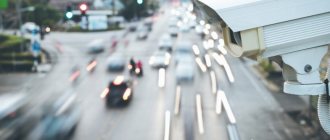Types of accidents and their causes
Classification of road traffic accidents is necessary because:
- is an element of determining the cause of an accident;
- allows you to clearly indicate the degree of guilt of the participant;
- allows you to limit the extent of material damage;
- is the basis for classifying the degree of guilt (administrative, criminal) depending on the harm caused to the victim.
There are both general reasons for road accidents, such as poor driving, failure to keep a distance, talking on the phone while driving, and specific reasons for certain road accidents.
That is why, in some cases, the most probable cause is already clear from the classification itself, which can serve for static analysis and planning of measures to prevent this type of accident in a certain area, where they occur much more often than on average.
Classification to indicate the degree of fault is important for insurance companies when resolving a dispute in court, therefore an incorrectly classified accident may lead to an incorrect court decision or denial of insurance compensation.
Correct classification allows the insurer to limit the insurance compensation to the amount specified in the contract specifically for this insured event.
Significant damage to the health or death of the victim may become the basis for initiating a criminal case.
Road accidents can be classified:
- according to the objectivity of the reason for the occurrence;
- for his reason;
- according to the method of occurrence;
- the severity of the consequences;
- on preventability.
The most common traffic violations that lead to accidents in parking lots
In courtyards, despite the seeming harmlessness of the situation and low speeds, a considerable number of traffic accidents occur. Alas, sometimes with very serious consequences, especially when it comes to car collisions with pedestrians.
about precautionary measures and methods of dealing with accidents in home and courtyard areas where signs 3.24 “Maximum speed limit” , limiting the speed of movement to 10-20 km/h, as well as in the coverage area of sign 5.21 “Residential zone” . Here are a few basic rules to follow to avoid getting into trouble in the yard:
1. Don't speed.
2. Before starting the maneuver, make sure it is safe. Everyone knows this point, but few people understand how to apply it in practice.
Let us explain: every time before you start moving (especially in reverse), look in the direction where you will start moving. Even if you have already turned on the gear and, having looked in the mirrors at the situation behind the car, for some reason you were distracted, say, you briefly looked at the phone to which you received an SMS, do not be lazy to double-check in the mirrors again to see if there is any interference in the direction where you are planning to move. Even if they looked away for a second or two.
The fact is that the situation can change very quickly, and you need to always be on alert, controlling it. For example, during this time a child could step out from behind a neighboring car. Or a car pulls up. Without making sure that you are free, you can very easily get into trouble.
3. Give priority to other road users. If you are in doubt about who should let someone through, and your co-driver clearly doesn’t want to give you passage, let him pass. Here, as on the road, the “three D rule” works: Give Way to the Fool.
4. And don't be too overconfident. The fact that everyone in the yard is driving slowly does not mean that the car is safe - accidents happen exactly when you don’t expect them!
A selection of examples with real accidents in yards is proof of this.
After all, it’s better to see once than to read a hundred times, right? see also
Exceeding the speed limit even by 5 km/h, for example in a courtyard, can be dangerous for pedestrians.
Looking ahead, we will say right away that the most common violation of traffic rules, leading to accidents in courtyards and other adjacent areas, is associated with ignoring paragraph 8.12 of the traffic rules:
8.12. Reversing a vehicle is permitted provided that this maneuver is safe and does not interfere with other road users. If necessary, the driver must seek the help of others.
That is, drivers, due to inattention, lack of experience, or because of haste, hit their cars against others when they reverse. Overall there is nothing unusual about this. In a confined space filled with cars, it can sometimes be extremely difficult to maneuver safely.
Classification according to the objectivity of the factors of occurrence
All road accidents due to (factors) of occurrence can be divided into having:
- objective reason for the occurrence : quality of the road surface, weather conditions (poor visibility, ice, strong side winds), lack of warning road signs;
- the subjective reason for the occurrence is everything that concerns exclusively the personal decisions of the participants in the accident.
When considering the degree of guilt of the participants, the existence of objective reasons for the occurrence of an accident is a mitigating circumstance.
Classification by causes of accidents
All accidents can be classified into:
- common to all types of accidents;
- specific for a certain type of accident.
The reasons common to all types of accidents are:
- being in an inadequate state (under the influence of psychoactive substances, tranquilizers, sick, tired);
- over speed;
- diverting the attention of the person driving the vehicle to foreign objects: cell phone, tablet, etc.
Specific causes are the reasons that in most cases lead to road accidents of a certain mechanism of occurrence.
For example, failure to allow a vehicle with the right of way to pass often leads to lateral or tangential collisions, technical malfunction of the brakes leads to rear collisions, driving into the oncoming lane leads to frontal collisions, etc.
Some types of reasons, for example, being intoxicated, make a person guilty a priori , without further consideration of the circumstances of the accident.
Classification by method of occurrence
Depending on the method or mechanism of occurrence, road accidents are of the following types.
Collision
Collisions can be of the following types:
- windshield;
- rear;
- lateral;
- tangent.
A head-on collision is a collision between vehicles traveling towards each other.
This is the most dangerous type of accident, since the energy of vehicles moving towards is summed up. This type of accident often ends in death for those involved. It is most often found on intercity highways without physical separation of lanes when overtaking and entering the oncoming lane. A rear-end collision is a collision between vehicles traveling in the same direction but at different speeds. May cause damage to multiple vehicles. The main specific reasons are failure to maintain distance, driver distraction, technical malfunctions of the brake system, and lack of studded tires in winter. Often this is also caused by driver distraction and speeding. Usually occurs on busy highways in bad weather conditions (ice, rain). Rarely leads to serious consequences.
A side collision is a collision between vehicles moving along a perpendicular path.
Most often it occurs when a vehicle exits from a secondary side road onto the main road at unregulated intersections and forks. It usually occurs within the city limits. The reason is most often the inattention of the driver leaving a secondary road with limited visibility when driving away from foreign objects (advertising billboards, trees, etc.). The second reason, and even more often, an accompanying one, may be speeding by a driver driving on the main road. A tangential collision is a collision between vehicles moving in the same direction. Occurs at uncontrolled intersections and in roundabouts when traffic rules are violated - failure to give the right of way to a vehicle according to traffic rules, or inattention when changing lanes. As a rule, it is not accompanied by serious damage.
Rollover
A rollover occurs when the speed is greatly exceeded under circumstances that are not conducive to stable movement: a sharp turn with an incline, a broken or broken wheel, a slippery road surface. It can also occur when abruptly exiting a side skid.
It is a very dangerous accident for participants, as it can lead not only to mechanical damage to the car, but also to fire as a result of fuel detonation.
Hitting a stationary vehicle
A collision with a stationary vehicle occurs within the city due to the inattention of an active participant, or due to improper parking of a stationary vehicle. Can have a wide variety of consequences depending on the speed of the moving participant.
Colliding with a pedestrian
A collision between a car and a person moving along the roadway or sidewalk is classified as a pedestrian collision. An accident in which a collision with a car in motion was initiated by a pedestrian is also interpreted. This can happen due to driver inattention, speeding, limited visibility and bad weather conditions, as well as when a pedestrian does not comply with traffic rules. From a legal point of view, the driver bears greater responsibility for such an accident as a person who has responsibility for a high-risk vehicle, a car. Therefore, if a traffic violation leads to an accident of this type, the driver will face administrative liability with a fine.
In the event of the death of a pedestrian, criminal liability arises.
Hitting a cyclist
In terms of the interpretation of guilt and legal consequences, a collision with a cyclist is similar to a collision with a pedestrian. The only difference is that from the point of view of traffic rules, a bicycle is also a vehicle and the rules for riding a bicycle differ from the rules for moving a pedestrian. A common example is a collision with a cyclist when the cyclist crosses the roadway at a pedestrian crossing while driving a bicycle, which is prohibited by traffic rules.
A cyclist's state of intoxication makes him guilty of an accident, just like driving a car.
Hitting a horse-drawn vehicle
A horse-drawn vehicle collision is a collision between a vehicle and a cart containing draft animals. This type of accident is more common in rural areas. The reason may be inattention and violation of traffic rules by the driver, insufficient interaction between the experience of the driver and the draft animals of the horse-drawn vehicle.
Hitting an animal
Hitting an animal is treated as an accident, even if the driver of the vehicle did not suffer damage, since domestic animals, according to law, are the property of their owners, and wild animals are the property of the state (Civil Code, Art. 137, Law on Animal World, Art. 4 ).
Therefore, according to the law, an accident involving animals also requires registration and compensation for damage to the injured party under compulsory motor liability insurance.
Passenger fall
According to statistics, passenger falls in public transport account for about 40% of cases in which public transport drivers violated traffic rules. Most often they occur during emergency braking. In some cases of falls, the fault of passengers who violate the rules of travel on public transport can be traced. It should be noted that if a passenger falling on a bus is interpreted as an accident, then the continuation of the bus movement is considered as leaving the scene of an accident, with all legal consequences for the driver.
Passengers falling out of a car are very dangerous, although they are rare.
Other types of accidents
Other types of accidents according to the method of occurrence include all incidents that do not fall into the described classification - for example, causing damage to people who are not participants in the traffic in a collision with a residential building, the fall of an unsecured load from a cargo vehicle, derailment of a tram, etc.
In such cases, the responsible party and the reasons for what happened are quite obvious - this is the driver of the vehicle and his behavior, which led to damage to passive participants.
The largest industrial and transport accidents in Russia for the period from 1950 to 2009
| Year | Location | Type of accident | The scale of the accident and its consequences |
| District of Kyshtym, Ural | Release of radioactive substances as a result of an explosion | Release of 2.1 million curies of radioactive substances, contamination of an area of at least 15 thousand km2, eviction of 10,000 people. | |
| Chernobyl | Nuclear power plant reactor explosion | Release of radioactive substances with contamination of part of the territory of the Russian Federation, where about 6.5 million people live. | |
| Cherepovets, European part of Russia | Emergency release of 5 tons of phenol from a metallurgical plant | Contamination of 95 thousand hectares of the Rybinsk Reservoir, formation of a 100-km underwater plume of a toxic substance | |
| Ulu-Telyak, near Ufa, Ural | Explosion on a product pipeline, railway accident | The largest railway accident in all the years of the existence of the USSR. The energy of the volumetric gas explosion corresponded to 300 tons of TNT, the death of 780 people, and the injury of more than 800 people. | |
| Ufa | Explosions at chemical plants | Extensive areas of air and river water pollution, phenol poisoning of hundreds of thousands of people. | |
| Serov, Sverdlovsk region | Break of the Kiselevsky Reservoir dam on the river. Kakwa, flood | The damage amounted to 63.3 billion rubles. in 1993 prices. 12 people were killed, 43 people were injured, 6.5 thousand people were injured, 69 km2 were flooded. | |
| Usinsky district, Komi Republic | Massive oil leak | 100,000 tons of oil spilled from the pipeline. The total area of contamination was 69.3 hectares. 63.5 thousand people were affected. | |
| village Mamony, Irkutsk region. | Plane crash of the TU-154M plane. | 125 people died | |
| Khabarovsk region | Plane crash of the TU-154 plane. | Death of 97 people. | |
| Irkutsk | Plane crash of AN-1 24 "Ruslan" | Death of 66 people, several multi-storey buildings destroyed. | |
| March 2007 | Ulyanovskaya mine, Kemerovo region. | Methane gas explosion | 110 miners died. |
| May 2007 | Mine "Yubileinaya", in Kuzbass | Methane gas explosion | 39 people died. |
| August 2009 | Sayano-Shushenskaya HPP | Hydrodynamic shock | 75 people died. The damage amounted to about 40 billion rubles. |
In Russia, the average annual number of transport accidents exceeds 150 thousand, and the number of victims ranges from 30-40 thousand people.
The number of deaths of passengers and crew members per 1 billion passenger-kilometers is: in road transport - 30-35, in aviation - more than 1, in railway - 0.02-0.03. It should be noted that transport is a source of danger not only for its passengers, but also for the population living in the areas of transport highways, since they transport a large amount of flammable, chemical, radioactive, explosive and other substances that pose a threat to human life and health in the event of an accident . Such substances account for about 12% of the total volume of cargo transportation by all types of transport. It should be emphasized that the overwhelming majority of transport accidents (95%) occur in road transport.
According to the UN, every year in the world about 300 thousand people die and 8 million people are injured as a result of motor vehicle accidents. In addition, motor vehicles are the main air pollutant in cities.
The most serious consequences are caused by accidents involving vehicles transporting large groups of people. Cars collide with railway transport, with each other, fall into abysses on mountain roads, etc. For example, in 1994, a bus collided head-on with a heavy truck in Thailand. There was a fire. 37 people died. In January 1999, a bus moving at night along the Georgian Military Road fell from a height of 120 m into the gorge of the river. Terek. All the people on the bus died. 28 corpses were found.
Particularly serious are motor vehicle accidents involving fires, explosions, and leakage of hazardous substances. In general, for the most part, road traffic accidents are local in scale, but due to their huge number, in total they are today the most destructive man-made disaster in the whole world
Aviation today has become a mass mode of transport and, in general, has surpassed road transport in safety. However, aviation accidents, accidents and catastrophes are still relatively common, and due to the large capacity of aircraft, their victims are numerous.
In recent years, a number of serious aviation accidents have occurred in Russia. In December 1995, a Tu-154 plane flying from the island lost control and crashed from a ten-kilometer altitude. Sakhalin to Khabarovsk. 97 people on the plane died. In 1996, while taking off at the airport in Kinshasa (Zaire), a Russian An-32 aircraft lost control and crashed into the city market. 300 people died, hundreds of people were burned. In August of the same 1996, a Russian Tu-154 plane crashed on the Spitsbergen archipelago (Norway), killing about 150 people. In Irkutsk in September 1997, while taking off from an aircraft factory airfield, an An-124 Ruslan transport plane crashed into a microdistrict of the city. Several multi-storey residential buildings, a school, and an orphanage were completely or partially destroyed. 17 crew members, 6 people accompanying the cargo and 44 residents of the microdistrict, including children, were killed. A plane crash in July 2002 in the skies over Germany during a collision between a TU-154 airliner and a Boeing 757 cargo plane claimed the lives of all passengers and crew members of the aircraft.
Despite the fact that rail transport is much safer than road and air transport, the accident rate is quite high. The risk is especially high when transporting dangerous goods, the bulk of which are delivered by this transport. According to statistics, the number of accidents and incidents on freight trains carrying dangerous goods tends to increase. The determining factor influencing the safety of railway traffic remains the wear and tear of technical equipment, as well as the human factor.
Some of the largest train accidents can be cited as examples.
The Russian history of railway accidents began in the 19th century. In 1876, 15 versts from Odessa, almost 70 recruits died as a result of a military train crash. Railroad accidents have occurred and will continue to occur. In 1968, near the station. White Stolby near Moscow there was a head-on collision between a commuter electric train and a freight train. Several dozen people died. In 1971 at the station. Ovechko, an oil tanker exploded in the Stavropol Territory. The fire engulfed the train and station, leaving more than 100 people burned and injured. In 1988, there was a train accident near the station. Bologoe (Kalinin region). In 1990, near the village of Elnikovo in the Belgorod region, a passenger train crashed into the last tanks of a freight train. A fallen tank with liquefied gas blocked the oncoming track along which a passenger train was traveling. 17 passenger cars and 2 locomotives burned, 11 people died. In the Kalinin region near the town of Nelidovo in 1992, a head-on collision between a passenger train and a freight train occurred, which resulted in the death of 43 people. In 1994, in the Belgorod region, a commuter electric train collided with freight train cars, which led to the death of 21 people. In 1996, locomotive collisions with buses occurred near Totsky (Orenburg region) and near Mokroy Batai (Rostov region), resulting in the deaths of 23 and 21 people, respectively. The listed disasters are only a part of the railway transport incidents that took place in Russia.
Sea and river transport, having one percent of the country's passenger turnover and eleven percent of cargo turnover, occupy a modest place in the problem of transport safety. The main danger to people's lives, as statistics show, is the small fleet here. At the same time, large shipwrecks also occur periodically. The sinking of the English liner Titanic on April 15, 1912, which killed 1,500 people, had particularly grave consequences. Almost the same number, more than 1200 people, died when in 1926 on the river. The Yangtze blew up a Chinese troop transport. In the second half of this century, there were several serious shipwrecks associated with sea ferries (Norway, Greece, Philippines, China, Bangladesh, England, Egypt, Estonia). The collision of the Philippine sea ferry Dona Paz with the tanker Vector in 1987 had a record number of casualties, when the sinking of the ships claimed the lives of almost 4,400 people.
The history of the Russian military, cargo and passenger fleets is replete with ship disasters. The largest Russian disaster with a large number of casualties was the explosion and death of the battleship Empress Maria in Sevastopol in 1916*. A similar disaster occurred in Sevastopol in 1955, when (presumably from the explosion of a mine left over from the Great Patriotic War) the battleship Novorossiysk capsized and sank, which led to the death of 608 people. At $198 on the river. On the Volga River near Ulyanovsk, the river motor ship "Suvorov" collided with a bridge support. In this case, 175 people died. In 1986, near Novorossiysk, the passenger ship Admiral Nakhimov collided with a dry cargo ship and sank, taking with it more than 300 lives.
The most ancient man-made disaster for people is fires. Nowadays, there are fires in buildings and structures for industrial, residential, and social purposes. 20 people died. The paradox of the situation with the Kiselevsky hydroelectric complex was manifested in the fact that the next year the breakthrough of this dam repeated itself according to the same scenario. In August 1994, also due to heavy rains, the dam of the Tirlyansky reservoir (Bashkortostan) burst. The city of Beloretsk and other settlements were damaged. More than 90 people were killed or missing.
This problem remains acute for Russia today. The country operates more than 30 thousand reservoirs and several hundred storage tanks for industrial wastewater and waste. There are about 60 large reservoirs with a capacity of more than 1 billion m3. Hydraulic structures at 200 reservoirs and 56 waste storage ponds have been in operation without reconstruction for more than 50 years and are in disrepair. Particularly acute are the problems of the condition of the concrete of the first pillars of the Sayano-Shushenskaya hydroelectric power station dam, the repair of the dam and bank protection of the Botkinsk reservoir in the Perm region, the reconstruction of the bank protection dam in the city of Yuryevets, Ivanovo region, the replacement of sluice gates and the strengthening of enclosing dams on the Volga-Don shipping canal, the strengthening of walls cameras and replacement of sluice gates on the waterways of the Volga and Kama basins.
Certain threats to the population are posed by the unstable operation of public utility facilities, which in recent years has been typical for Russia, where the existing capacity of life support systems in almost all regions and settlements of the country is insufficient and does not meet regulatory requirements. The annual capacity deficit is: water supply - 9.6 million m3, sewerage - 8.3 million m3, heat supply - 13 thousand Gcal/h. In addition, over the past 10 years, the physical wear and tear of utility equipment has increased 1.7 times and in most cities and towns has reached a critical value - 50-70% or more. The dilapidation of life support systems has become a factor in the constant potential danger of emergencies at housing and communal services facilities. A particular danger during the autumn-winter heating period is created by accidents in urban heat supply systems. This is due to the fact that the volume of pre-winter work is systematically underfulfilled due to a lack of funds, as well as due to a lack of fuel. Every winter, entire residential areas with tens of thousands of residents are left without central heating. In the most severe cases, the population has to be evacuated from their places of permanent residence.
The above brief analysis of hazards and threats of a man-made nature allows us to conclude that the main sources of man-made danger, as a rule, are:
•human economic activity aimed at obtaining energy, development
•energy, industrial, transport and other complexes;
•objective increase in the complexity of production using new technologies that require high concentrations of energy and substances hazardous to human life;
•lost reliability of production equipment, vehicles, imperfection and obsolescence of technologies, decline in technological and labor discipline;
•dangerous natural processes and phenomena that can cause accidents and disasters at industrial and other facilities.
For Russia, due to its characteristics associated with structural changes in the economy, the following should also be included among the sources of man-made hazard:
•the shutdown of a number of production facilities, which led to disruption of economic ties and failures in technological chains;
•high level of depreciation of fixed production assets, reaching 80-100% in a number of industries;
• accumulation of production waste that poses a threat of the spread of harmful substances;
• reducing the demands and efficiency of the work of supervisory authorities and government inspections;
• absence or insufficient level of preventive measures to reduce the scale of emergency situations.
